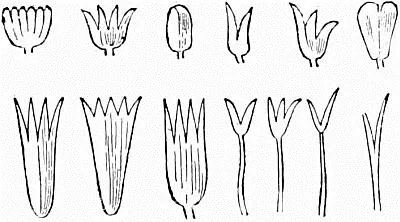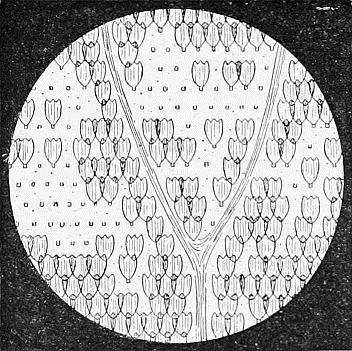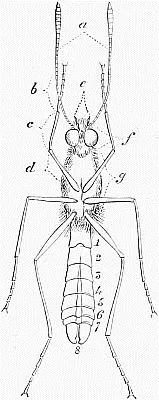William Furneaux - Butterflies and Moths (British)
Здесь есть возможность читать онлайн «William Furneaux - Butterflies and Moths (British)» — ознакомительный отрывок электронной книги совершенно бесплатно, а после прочтения отрывка купить полную версию. В некоторых случаях можно слушать аудио, скачать через торрент в формате fb2 и присутствует краткое содержание. Жанр: Природа и животные, foreign_antique, foreign_prose, на английском языке. Описание произведения, (предисловие) а так же отзывы посетителей доступны на портале библиотеки ЛибКат.
- Название:Butterflies and Moths (British)
- Автор:
- Жанр:
- Год:неизвестен
- ISBN:нет данных
- Рейтинг книги:5 / 5. Голосов: 1
-
Избранное:Добавить в избранное
- Отзывы:
-
Ваша оценка:
- 100
- 1
- 2
- 3
- 4
- 5
Butterflies and Moths (British): краткое содержание, описание и аннотация
Предлагаем к чтению аннотацию, описание, краткое содержание или предисловие (зависит от того, что написал сам автор книги «Butterflies and Moths (British)»). Если вы не нашли необходимую информацию о книге — напишите в комментариях, мы постараемся отыскать её.
Butterflies and Moths (British) — читать онлайн ознакомительный отрывок
Ниже представлен текст книги, разбитый по страницам. Система сохранения места последней прочитанной страницы, позволяет с удобством читать онлайн бесплатно книгу «Butterflies and Moths (British)», без необходимости каждый раз заново искать на чём Вы остановились. Поставьте закладку, и сможете в любой момент перейти на страницу, на которой закончили чтение.
Интервал:
Закладка:
William S. Furneaux
Butterflies and Moths (British)
Plate I
Danielsson & Co., del. ad. Nat. et Chromolith.
PREFACE
The favourable reception with which the 'Out-door World' has been greeted has encouraged the publishers to issue a series of volumes dealing in fuller detail with the various branches of Natural History treated of in that work. Necessarily each subject was only briefly touched upon, but the study is of so enticing a character that 'appetite grows by feeding,' and the students of the 'Out-door World,' having tasted the sweetness of companionship with Nature, will not rest satisfied with the help afforded by that handbook. Each one will want to go deeper into that particular department which most appeals to his own inclinations.
The present volume is written expressly for those who desire to extend their knowledge of the British Lepidoptera, or, to use the more popular names, 'Butterflies and Moths.'
The general characteristics of this interesting order of insects are described somewhat fully, but, of course, it would be impossible to give an individual account of all the British Lepidoptera in a work of this size, so a selection has been made such as will satisfy the requirements of the great majority of those who intend to take up this particular branch of entomology. The number of British Butterflies, however, is so limited that a place has been found for a figure and a description of every species; and, of the larger moths, many of the common and typical kinds have been included. An introduction to the study of the Micro-lepidoptera has also been added.
No trouble has been spared to render this work thoroughly practical. In addition to the verbal descriptions of so many species, twelve coloured plates and a large number of woodcuts have been specially prepared to help the student in his work. It is believed that the extreme care with which these have been produced will render them of the greatest assistance to the collector in the recognition of his specimens.
But he has not only to recognise his specimens – he must first catch them; and here full directions have been given to insure success in this part of his work, as well as in the management, preservation, and arrangement of his captures.
The Author hopes that this volume may be the means of adding many happy hours – hours of the purest enjoyment – to the lives of those whom he has succeeded in luring into the fields and lanes and woods of the Out-door World.
PART I
STRUCTURE AND LIFE-HISTORY OF THE LEPIDOPTERA
CHAPTER I
GENERAL CHARACTERS
The word Lepidoptera , which you see at the head of this page, is the name of the order of insects to which this volume is to be devoted. It is formed from two Greek words, one ( lepis ) signifying a scale , and the other ( pteron ) denoting a wing ; and was applied by the great naturalist Linnæus to the scaly-winged insects popularly known as Butterflies and Moths.

Fig. 1. – Scales from the Wings of Butterflies.
Every one of my readers has undoubtedly handled some of the interesting creatures of this group – having been led to do so either by the extreme beauty of their clothing, or, perhaps, from a murderous intent in order to protect his own garments from the ravages of a supposed marauder. A light mealy powder will probably have been observed afterwards on the fingers that have touched the victim's wings.
This powder, although it sometimes presents a beautiful glossy surface when spread over the skin, does not exhibit any definite form or structure without a more minute examination. Yet these are the scales that led the immortal naturalist to invent the somewhat long but useful term Lepidoptera .
The very next time the opportunity offers itself, dust off a little of the mealy powder with a small and very soft brush on to a strip of white paper or a slip of glass, and examine it with a powerful lens or the low power of a compound microscope. What a sight you will then behold! Each little particle of dust is a beautifully formed scale, stamped with a number of minute rounded projections, and often displaying the most gorgeous colours. A great variety of designs and tints are often exhibited by the 'dust' from a single wing. Take, for instance, for your inspection, scales from the wing of one of our commonest insects, the Small Tortoiseshell Butterfly ( Plate III Конец ознакомительного фрагмента. Текст предоставлен ООО «ЛитРес». Прочитайте эту книгу целиком, купив полную легальную версию на ЛитРес. Безопасно оплатить книгу можно банковской картой Visa, MasterCard, Maestro, со счета мобильного телефона, с платежного терминала, в салоне МТС или Связной, через PayPal, WebMoney, Яндекс.Деньги, QIWI Кошелек, бонусными картами или другим удобным Вам способом.
), and you will be surprised at the pleasing contrasts. But when your curiosity leads you to deal with others in the same manner, the varied display of forms and colours is simply amazing.

Fig. 2. – Portion of the Wing of a Butterfly from which some of the scales have been removed.
In order that we may learn still more of the structure of the wings of the Lepidoptera , we will examine a portion of one from which some of the scales have been removed, again bringing the lens or the microscope into our service. We now see that the scales are arranged in rows with great regularity on a thin and transparent membrane, which is supported by a system of branching rays. And the membrane itself, in parts which have been laid bare, is marked with regular rows of dots – the points at which the scales were originally attached by means of short hollow rods.
The framework that supports the thin membrane we have spoken of as consisting of a system of rays , but to these the terms veins , nerves , nervures , or nervules are more commonly applied by various naturalists. We cannot do better, however, than adhere to the name originally used, for the structures in question do not perform the functions of veins, though at first they contain blood, nor are they themselves parts of the nervous systems of the insects to which they belong.
The result of our examination of the wings of butterflies and moths has been to justify the application of the term Lepidoptera ; but we must now study other equally important and interesting features of the structure of these insects. First, let us note the general form of the body.

Fig. 3. – Body of a Butterfly – Under Side.
1-7, segments of the abdomen; 8, anal extremity; a , antennæ; b , tarsus; c , tibia; d , femur; e , palpi; f , head; g , thorax.
A cursory glance at this portion of the creature's anatomy will show that it consists of three distinct and well-defined parts. In front there is the head, the size of which is somewhat small in proportion. Two very large eyes make up the greater portion of its bulk. It is remarkable, too, that butterflies possess eyes proportionately much larger than those of moths. Now, since butterflies always fly by day, and moths are, generally speaking, nocturnal insects, we might be led to suppose that the reverse of this arrangement would have suited the creatures better; for a small eye, we should think, would be able to collect sufficient light in the daytime to form a bright image, and a larger light-receiving area would be necessary during the darker hours for the same purpose. But it is evident that the sense of vision must depend on other conditions besides the size of the eye; and as these conditions are not understood in relation to the eyes of insects, any attempt at an explanation would be quite useless.
Читать дальшеИнтервал:
Закладка:
Похожие книги на «Butterflies and Moths (British)»
Представляем Вашему вниманию похожие книги на «Butterflies and Moths (British)» списком для выбора. Мы отобрали схожую по названию и смыслу литературу в надежде предоставить читателям больше вариантов отыскать новые, интересные, ещё непрочитанные произведения.
Обсуждение, отзывы о книге «Butterflies and Moths (British)» и просто собственные мнения читателей. Оставьте ваши комментарии, напишите, что Вы думаете о произведении, его смысле или главных героях. Укажите что конкретно понравилось, а что нет, и почему Вы так считаете.












